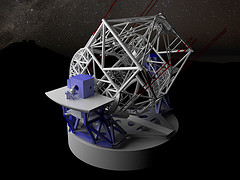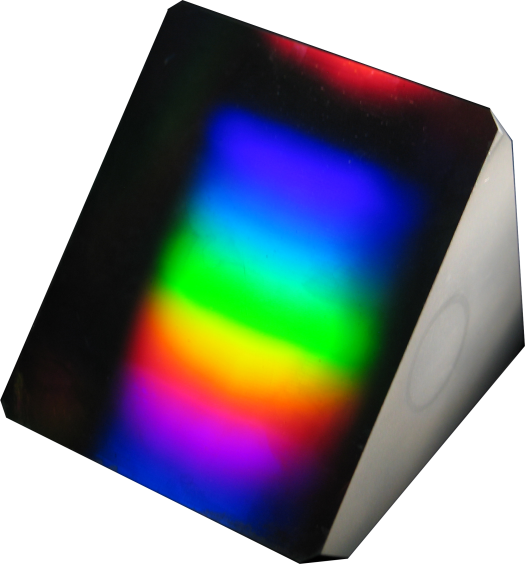{multithumb thumb_width=200}
A partnership of Dutch research institutes and industry consisting of SRON, TNO, NOVA/ASTRON and Philips will construct a demonstration model of the ‘immersed grating’ for METIS. METIS is an advanced infrared camera and spectrometer that will gain maximum benefit from the large corrective capacity of the planned European Extremely Large Telescope (E-ELT), which received the final go-ahead in June 2012.

The E-ELT will soon be able to observe objects that are 15 times weaker than objects that can be observed with the currently largest telescopes. With this new telescope astronomers expect to be able to do more research into areas such as exoplanets and their atmospheres, the birth and early development of our solar system, very old galaxies and dark energy and matter. Various measurement instruments will be placed behind the large mirror of the E-ELT (39 m) and METIS (Mid-infrared E-ELT Imager and Spectrograph) will be the third one of these to become operational. The telescope is expected to make its first observations in 2022.
METIS works with infrared light of a longer wavelength than other instruments (greater than 3 micrometers). This makes is easier for astronomers to use the telescope to correct for errors caused by the atmosphere in METIS than in other instruments. This can be particularly important in the start-up phase of the telescope. METIS is in reality two different instruments: a camera and a high-resolution spectrometer. The camera makes photos of light with wavelengths between 3 and 14 micrometers; the spectrometer can measure the spectra of objects in the spectral band of 3 to 5 micrometers.
Immersed gratings

Using the immersed gratings developed by SRON Netherlands Institute for Space Research, the radiation captured by METIS can be differentiated according to wavelength. This immersed grating is a combination of a prism and an optical grating. It ensures a drastic reduction in the instrument’s size without affecting its performance. An international committee has now judged that the technology of the immersed grating is actually suitable for use in METIS. The success of this technology is due to the smart combination of lithography, well known from the microchip industry, and advanced lens production techniques.
The committee judged that the Dutch consortium led by SRON has all of the necessary expertise in-house to make a real-size demonstration model. Using the immersed grating technology developed by SRON for the earth-observation instrument TROPOMI as the starting point, the team has made rapid progress over the past few years, which was partly due to being able to use the facilities and expertise of Philips Innovation Services.
Wafers
Project leader Aaldert van Amerongen: ‘The most important step was the switch to silicon wafers with a standard thickness, which was made possible by the introduction of a new polishing process. This enabled us to make improvements faster and to make use of standard technology and facilities such as those of the Philips lab. We have now demonstrated that we can achieve the required five-fold reduction in wavefront error even when we now use the larger (150 mm, ed.) silicon wafers. We can now produce a large immersed grating that is still diffraction limited: light that emerges from the grating has an error smaller than one fortieth of the wavelength. That really is a major achievement because when we started on the project we did not know if we would be able to achieve that.’
In the demonstration model, which the team hopes to realize in 2013, all of the newly developed technology will be combined step by step. An extensive test procedure for the prototype will be conducted later in the same year.


